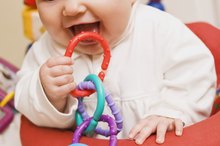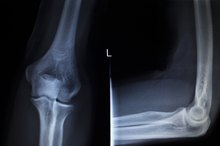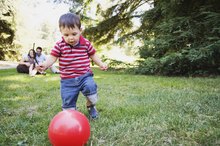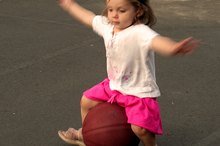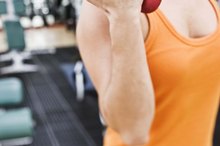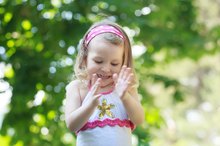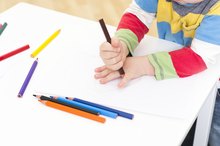What Are the Benefits of Fundamental Movement Skills?
Fundamental movement skills are the basis of the first movements that infants make in their lives. The child must master these skills before she can begin playing games, participating in sports or involving herself in any recreational activities. These fundamental movement skills benefit the child by providing her with control over her bodily movements.
Awareness
Fundamental movement skills help young people develop awareness of what their bodies can do. Awareness helps these individuals function on their own and within a group. This begins with effort awareness, as they learn how much muscular effort it takes to initiate, sustain and stop movements. The second is space awareness, where the infant learns how much space the body needs to complete these movements unhindered. The third is body awareness, where he learns how his bodily movements relate to other movements around him. This helps him anticipate where others could end up in relation to him based on their body movements.
- Fundamental movement skills help young people develop awareness of what their bodies can do.
- This begins with effort awareness, as they learn how much muscular effort it takes to initiate, sustain and stop movements.
Traveling
How Can Parents Help in the Sensorimotor Stage?
Learn More
When learning traveling skills, the child learns how to move the body from one location to another location 2. This is accomplished through walking, sliding, skipping, hopping and galloping. This benefits the child because she learns about the muscles needed to move herself and begins to do so consistently. She learns that putting one foot in front of the other while keeping her balance gets her from the door of her bedroom to her bed. She can then repeat this movement continually whenever she wishes to move.
- When learning traveling skills, the child learns how to move the body from one location to another location 2.
- This benefits the child because she learns about the muscles needed to move herself and begins to do so consistently.
Balance
The child achieves balance through stabilization skills. This requires the child to gain control of his equilibrium. Once he can control his equilibrium, he can begin focusing on postural control. Controlling his posture remains important because leaning too far forward or backward can cause the child to fall. Once the child has control of his balance, other movement skills become easier 12. Keeping his balance and having the right posture comes from muscle memory. Once he learns which muscles to use when maintaining a standing position, he can do it repeatedly.
- The child achieves balance through stabilization skills.
- Once he learns which muscles to use when maintaining a standing position, he can do it repeatedly.
Object Control
Torn Tendons & Ligaments From Hyperextension
Learn More
Object control is the final fundamental movement skill that a child learns 2. This skill involves handling and manipulating objects around her. Once she learns how her movements can cause things around her to move, she can throw, kick, bounce and catch objects. For example, she learns that by hurling her arm forward while holding a ball, she can make the ball continue to travel in that direction.
- Object control is the final fundamental movement skill that a child learns 2.
- Once she learns how her movements can cause things around her to move, she can throw, kick, bounce and catch objects.
Related Articles
References
- Development of Movement Coordination in Children: Applications in the Field of Ergonomics, Health Sciences and Sport; Geert Savelsbergh, et al.
- Physical Education for Young Children: Movement ABCs for the Little Ones; Rae Pica
- Your Active Child: How to Boost Physical, Emotional, and Cognitive Development through Age-Apropriate Activity; Rae Pica
Writer Bio
Jeremi Davidson began freelance writing in 2005. Davidson enjoys writing about sports and personal fitness, contributing to a number of different health and lifestyle websites. He holds a Bachelor of Arts in English from Thompson Rivers University.
